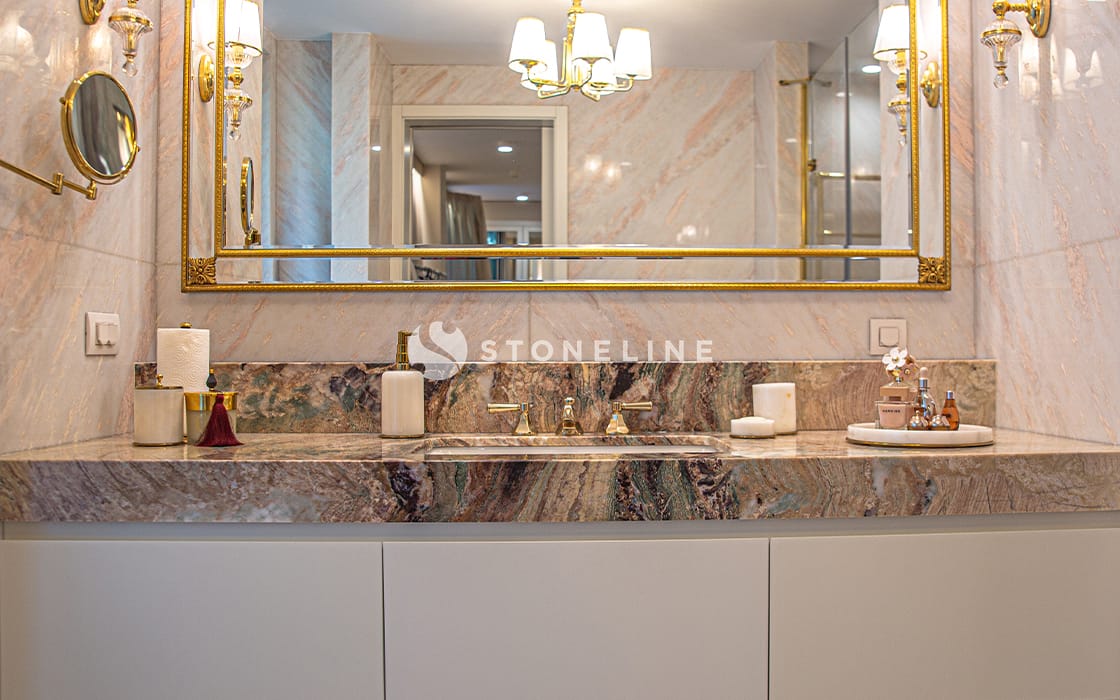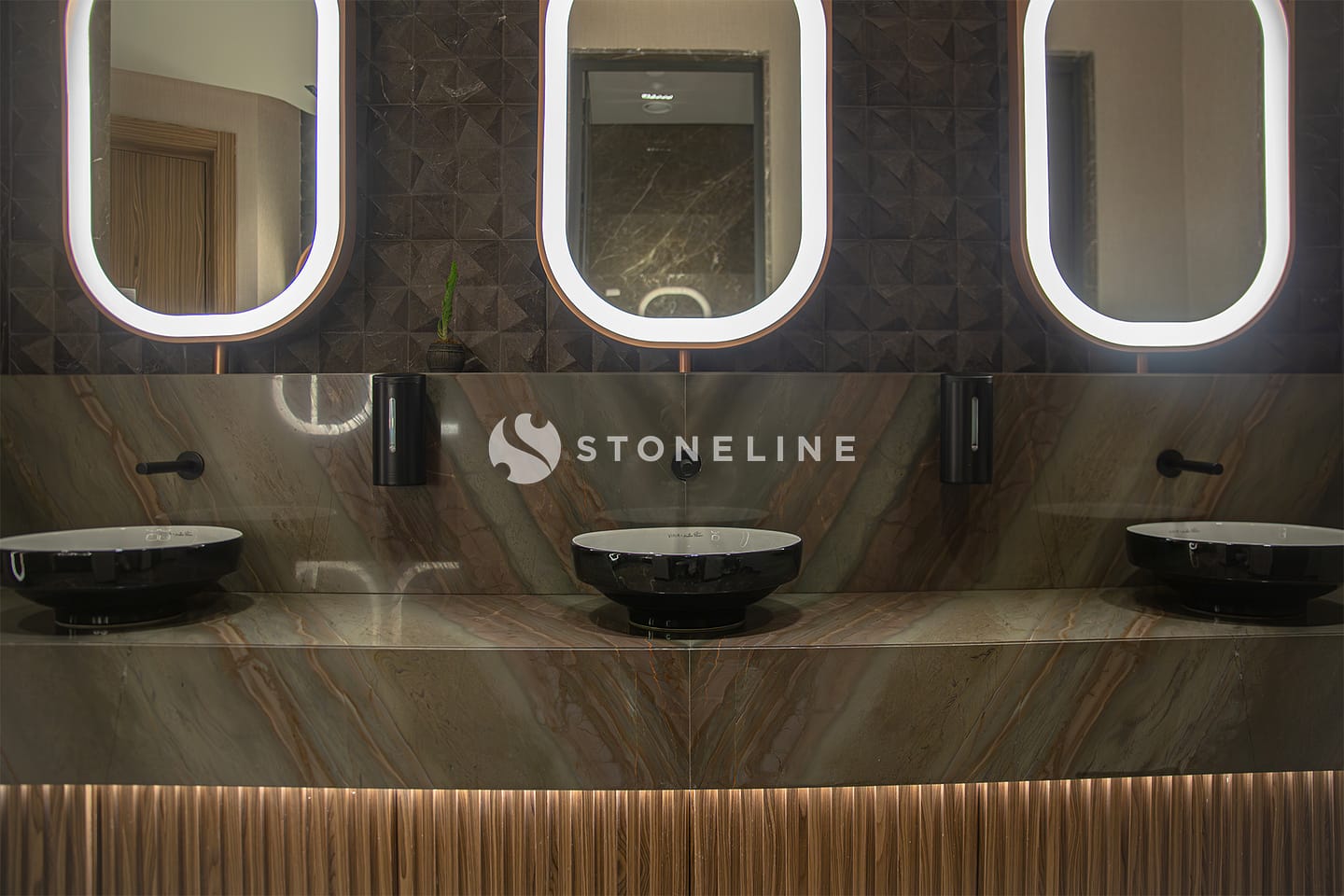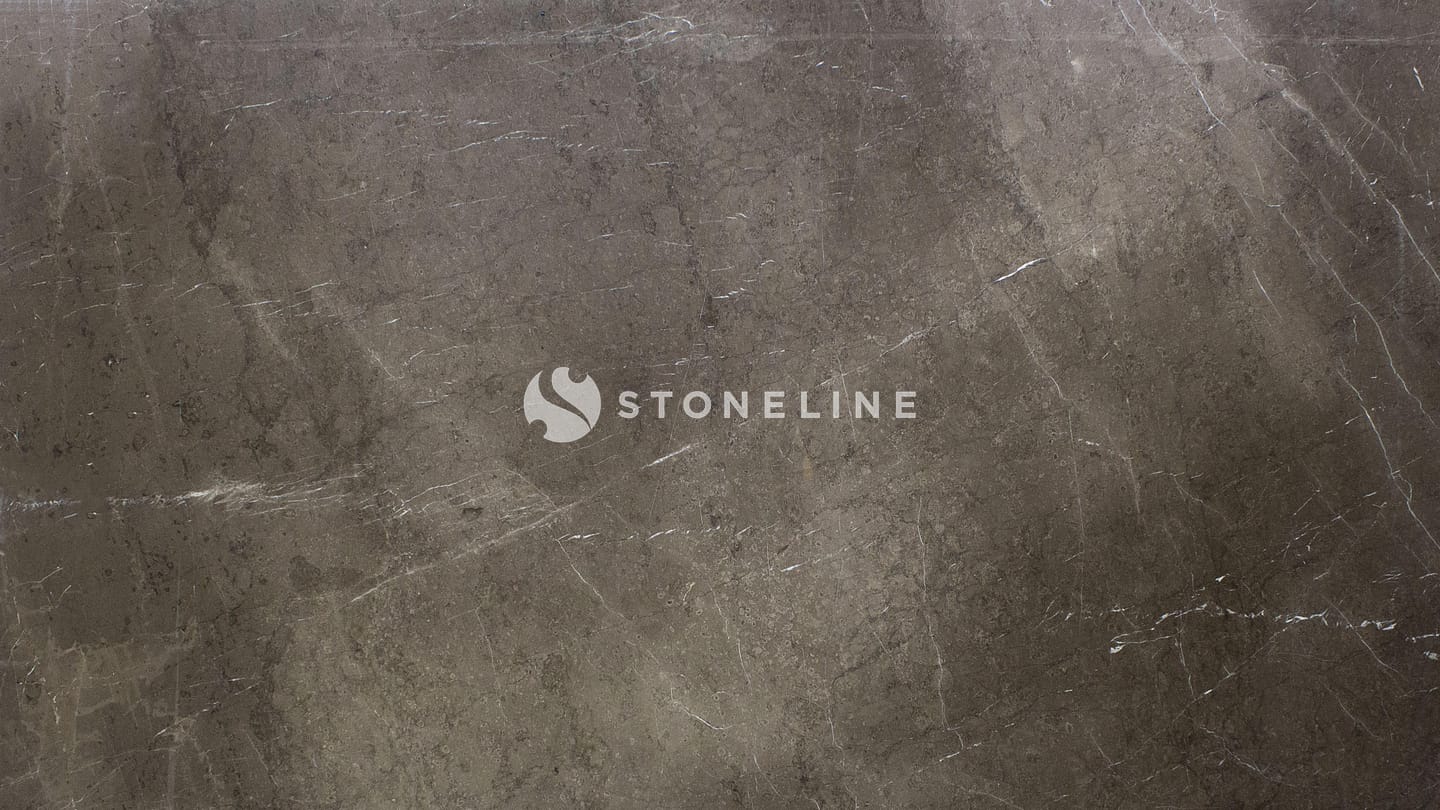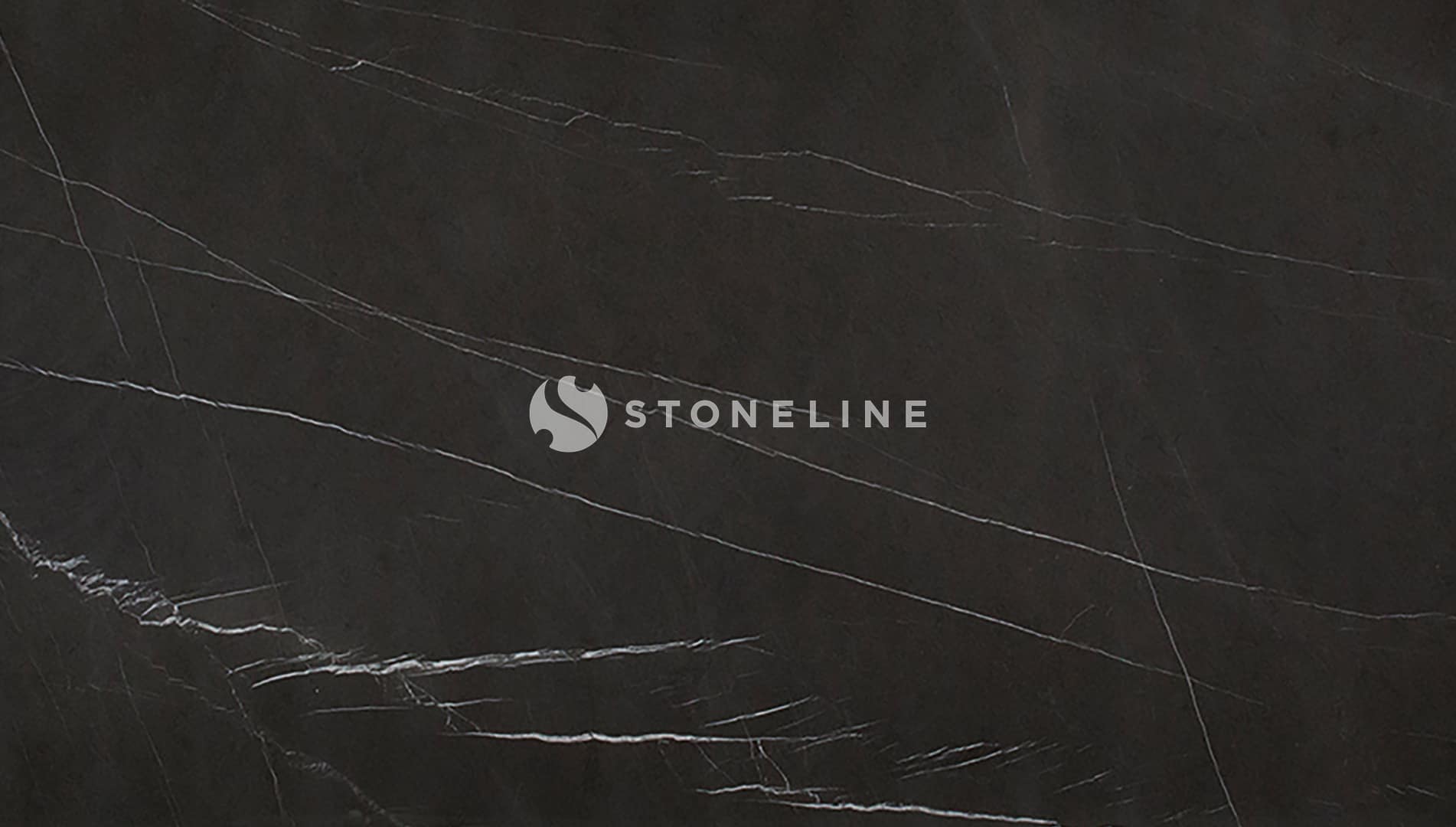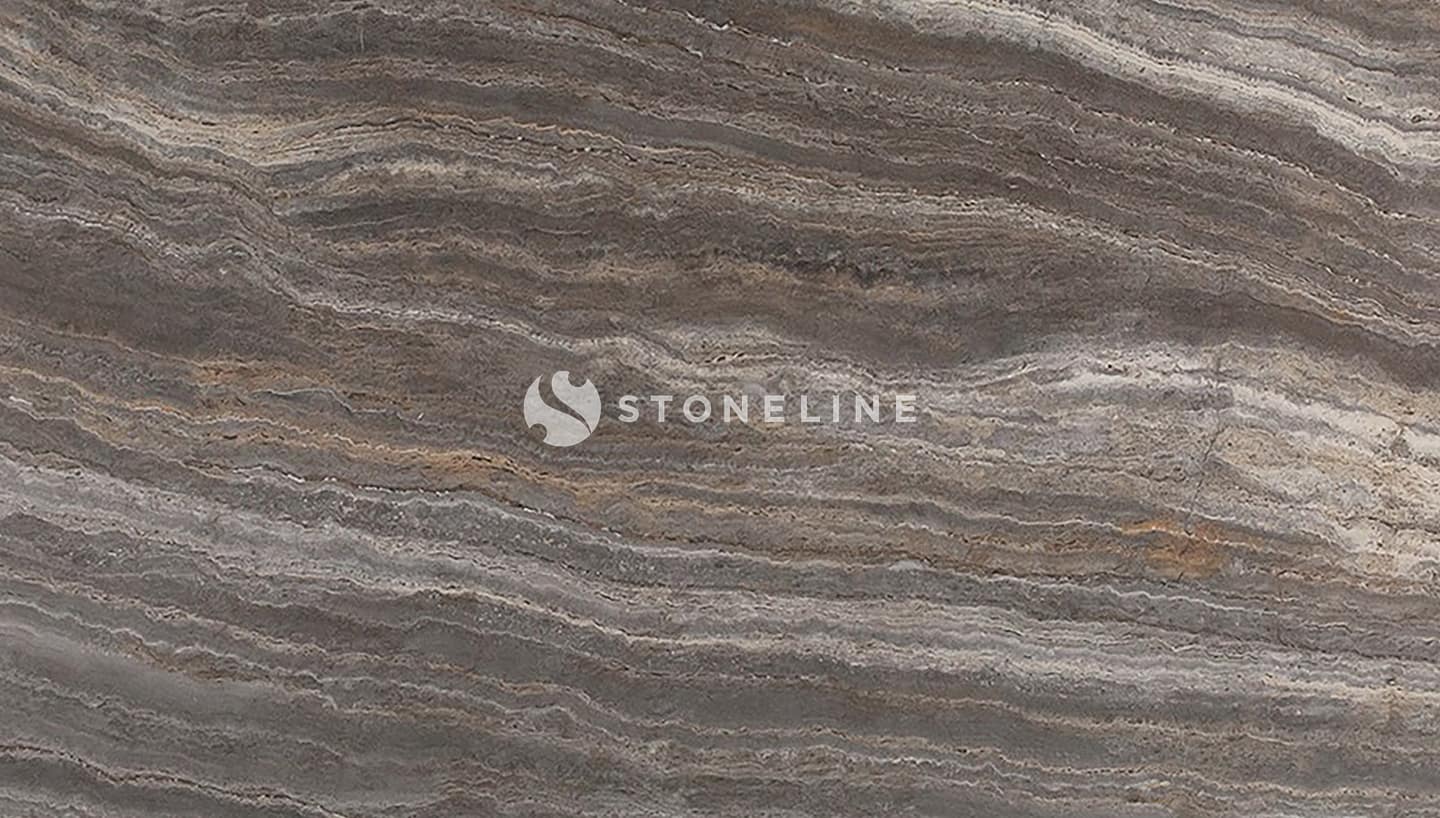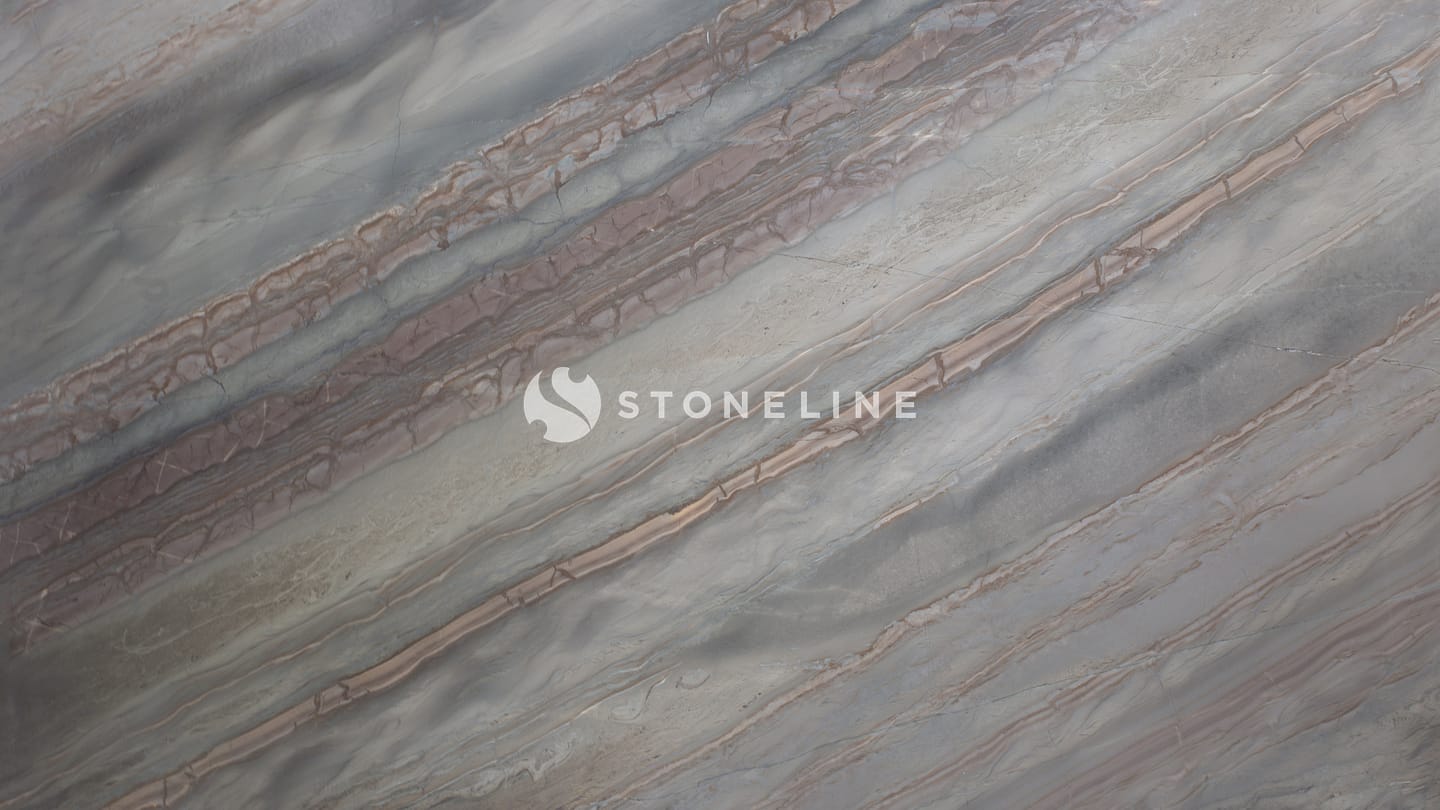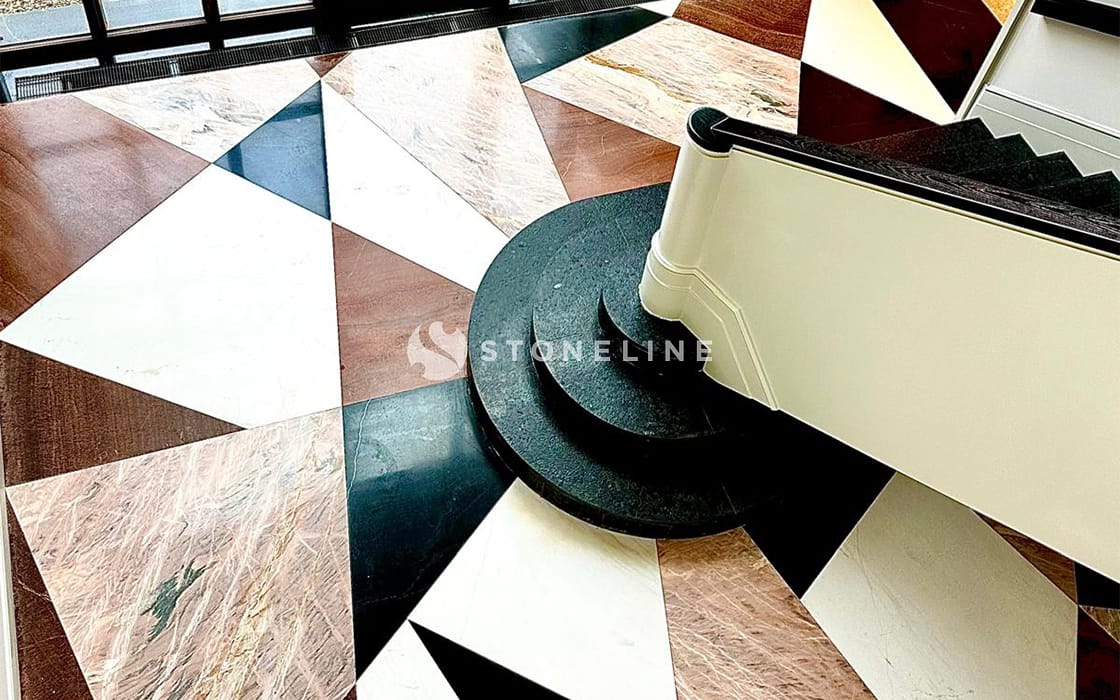
Quartzite is a versatile and striking natural stone that brings elegance and aesthetics to every kind of living space—from modern kitchens and luxurious bathrooms to decorative features and landscaping.
With its unique veining, color tones, and surface textures, it offers endless design possibilities. To maximize the visual impact of quartzite, careful attention to lighting, texture, and color selection is essential. In this guide, you’ll find key considerations and expert tips for designing with quartzite.
Step 1: Choose the Right Lighting for Quartzite Spaces
Lighting plays a crucial role in showcasing the natural beauty of quartzite. The color temperature of the light directly influences the stone’s appearance, making the right choice essential for your space.
- Warm White Light: Enhances warm tones like beige and brown, creating a cozy ambiance—ideal for traditional or rustic designs.
- Cool White Light: Highlights white and gray quartzites with a clean, modern look—suitable for minimalist and contemporary interiors.
- Daylight Lighting: Displays quartzite’s true colors most accurately—recommended for spaces where color fidelity is important.
Additionally, combining multiple lighting layers (ambient, task, and accent lighting) greatly improves both aesthetics and functionality:
- Ambient Lighting: Provides overall illumination, reduces shadows, and creates a warm, even atmosphere.
- Task Lighting: Offers focused light for specific functions (e.g., under-cabinet lighting for cooking or reading).
- Accent Lighting: Uses pendants, sconces, or floor lighting to turn quartzite surfaces into focal points.
Dimmer systems allow adjustable lighting levels to suit different moods and enhance quartzite’s patterns and color transitions.
Natural light should also be utilized through windows or skylights to highlight the stone’s texture and color variations at their fullest.
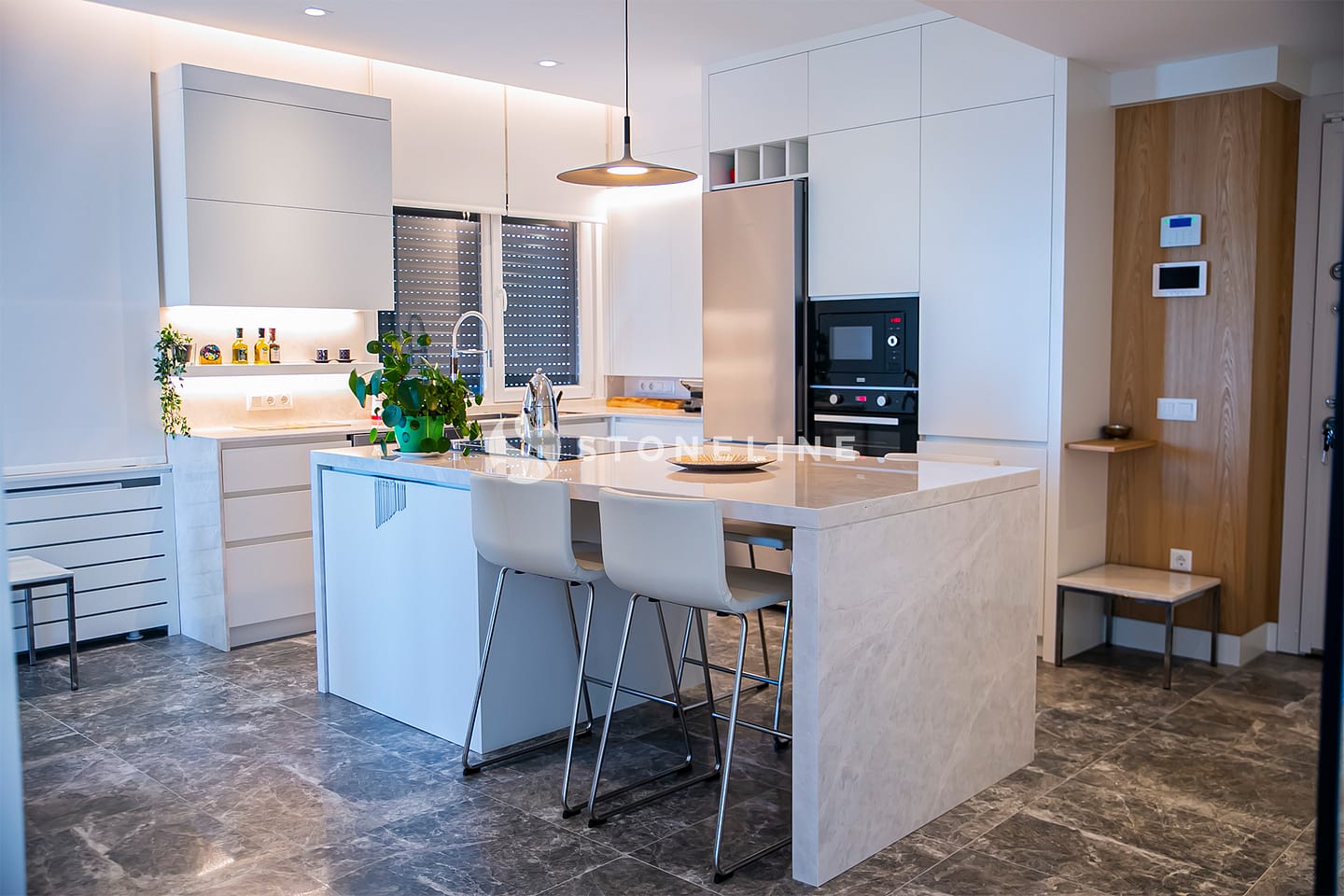
Step 2: Select the Right Texture and Finish for Quartzite
Quartzite comes in various surface finishes, each creating a distinct visual effect:
- Polished Finish: Reflects light to provide a shiny, luxurious look—perfect for modern and contemporary designs.
- Honed / Leathered Finish: Matte or semi-matte textures that resemble leather, giving a more natural and rustic appearance—ideal for warm, inviting spaces.
When choosing a surface finish, consider both your aesthetic goals and practical maintenance needs. Each type offers unique benefits.aintenance required. Polished finishes are easier to clean and maintain, while honed and leathered finishes require more upkeep.
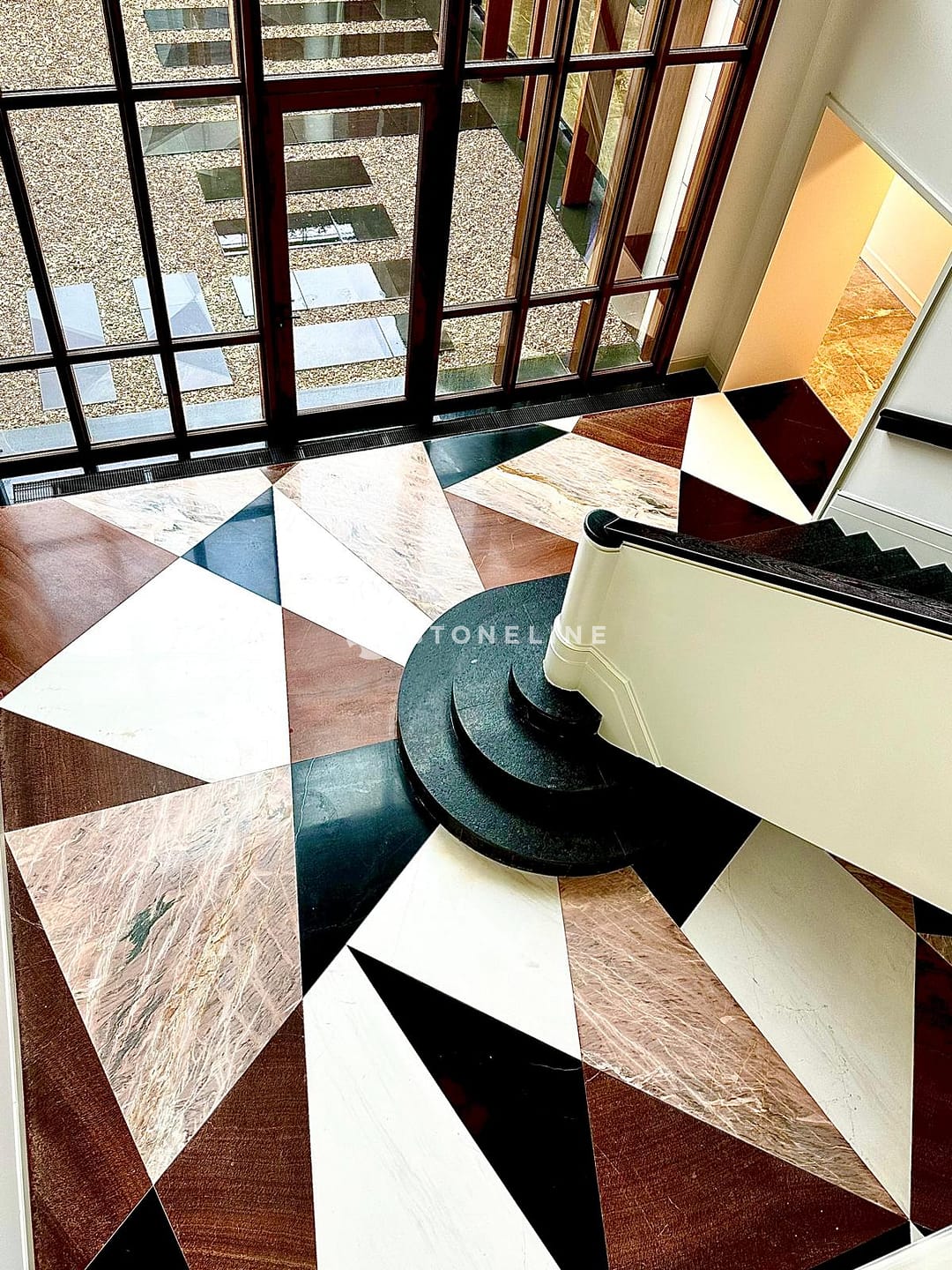
Step 3: Choose a Quartzite Color that Matches Your Design
Quartzite is available in a wide range of colors, from warm tones to dramatic veining. When selecting a color, consider your overall design style and desired ambiance:
- Warm Tones (Beige, Brown): Well-suited for traditional or rustic aesthetics.
- Dramatic Veining: Creates a bold visual focal point in any space.
- Light-Colored Quartzites: With waves, linear movement, or a uniform appearance, these provide a sleek and sophisticated look.
According to 2025 color trends, the most popular quartzite colors include white, gray, beige, mocha, and shades of blue.
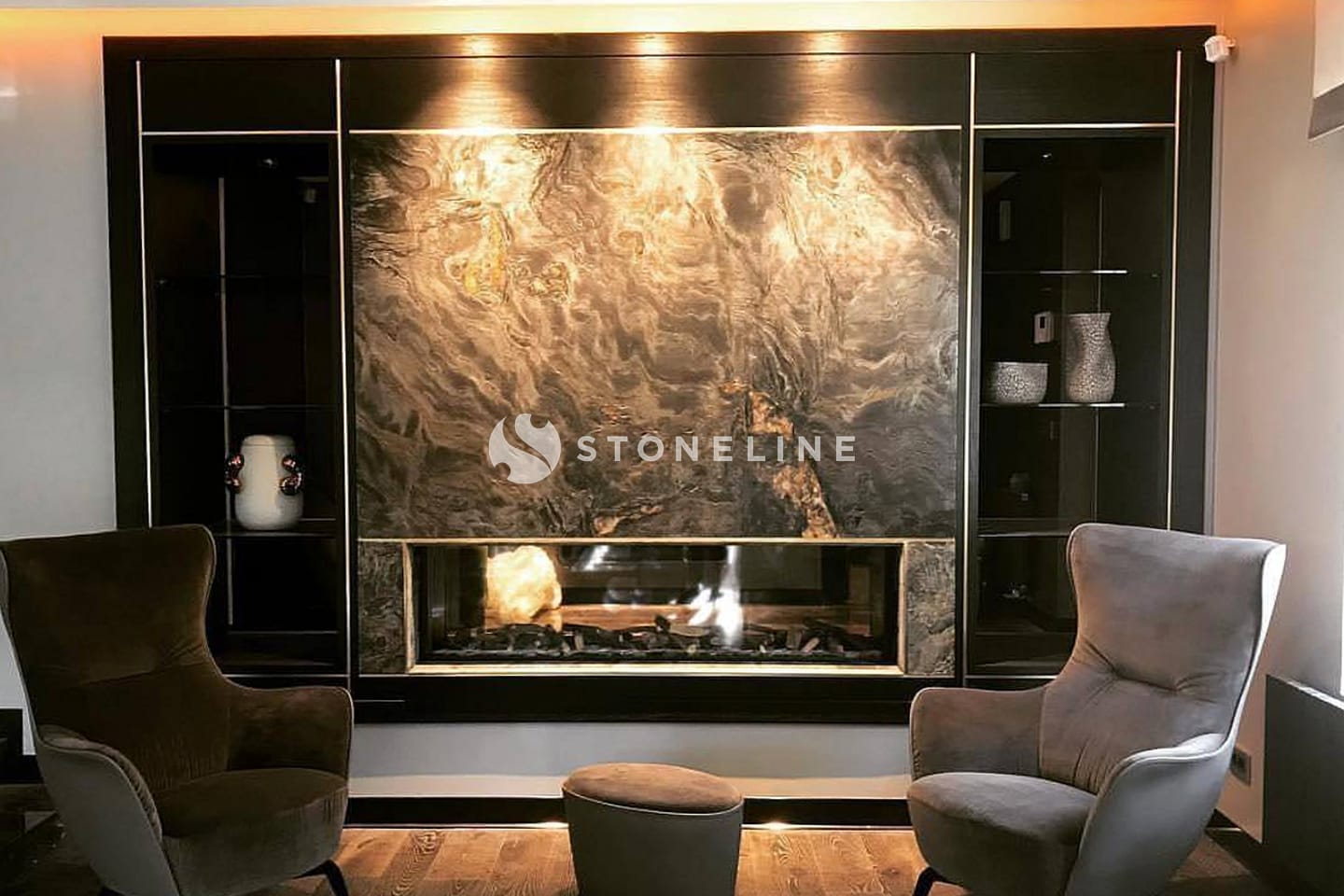
Step 4: Add Visual Interest with Creative Patterns and Layouts
As with other natural stones, quartzite can be used in various flooring and cladding alternatives. Creative options include:
Waterjet-cut patterns from different quartzite varieties
Borders and inlays
Herringbone or chevron patterns
Quartzite also pairs beautifully with other materials like wood and metal, allowing for unique and striking combinations.
When selecting a layout, keep both design vision and functional needs in mind. Projects involving multiple materials often require expert execution.
Step 5: Create Dramatic Effects with Backlighting
Certain types of quartzite are semi-translucent and suitable for backlighting. Stones such as Cristallo Quartzite gain dramatic emphasis when their veining is illuminated from behind.
Backlit quartzite is commonly used in countertops, wall panels, and artistic applications to create a luxurious, contemporary atmosphere.
Use LED panels or light tape systems to ensure even, glare-free lighting.
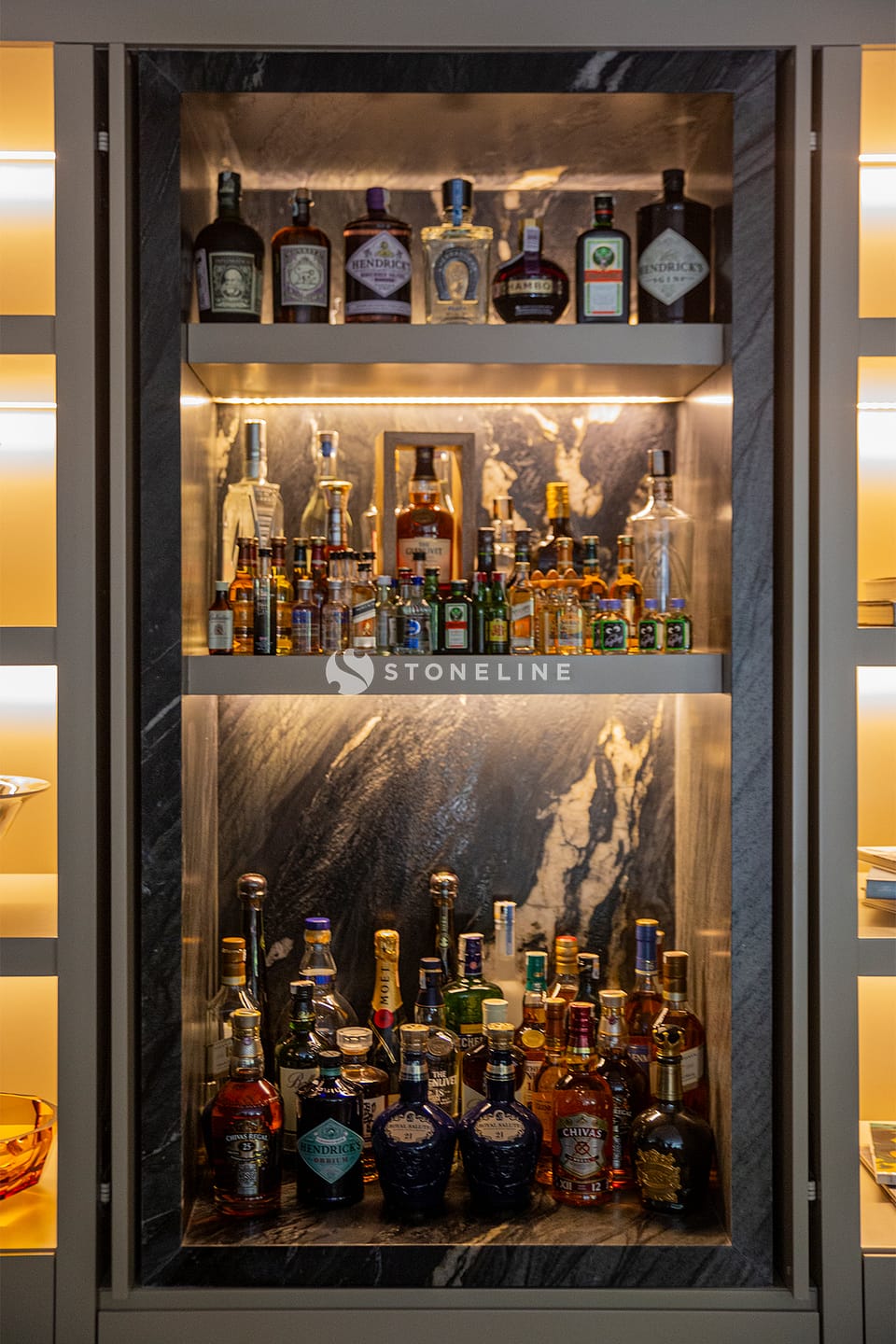
Step 6: Technical Considerations When Working with Quartzite
Quartzite is highly resistant to scratches, heat, and stains—making it an ideal material for high-use areas such as kitchens and bathrooms.
Each quartzite slab is unique, so it’s important to see and select your slab in person to ensure it meets your aesthetic expectations.
Professional installation is critical—especially for backlit applications—to achieve the desired visual effect and ensure durability.
Step 7: Inspiring Applications of Quartzite
Quartzite is used in a wide variety of applications, including:
Backlit quartzite installations, frequently seen in hotels, restaurants, galleries, and luxury homes as stunning visual features
Waterfall islands with continuous veining
Integrated countertop-to-wall designs
Mixed-material applications that combine quartzite with wood or metal
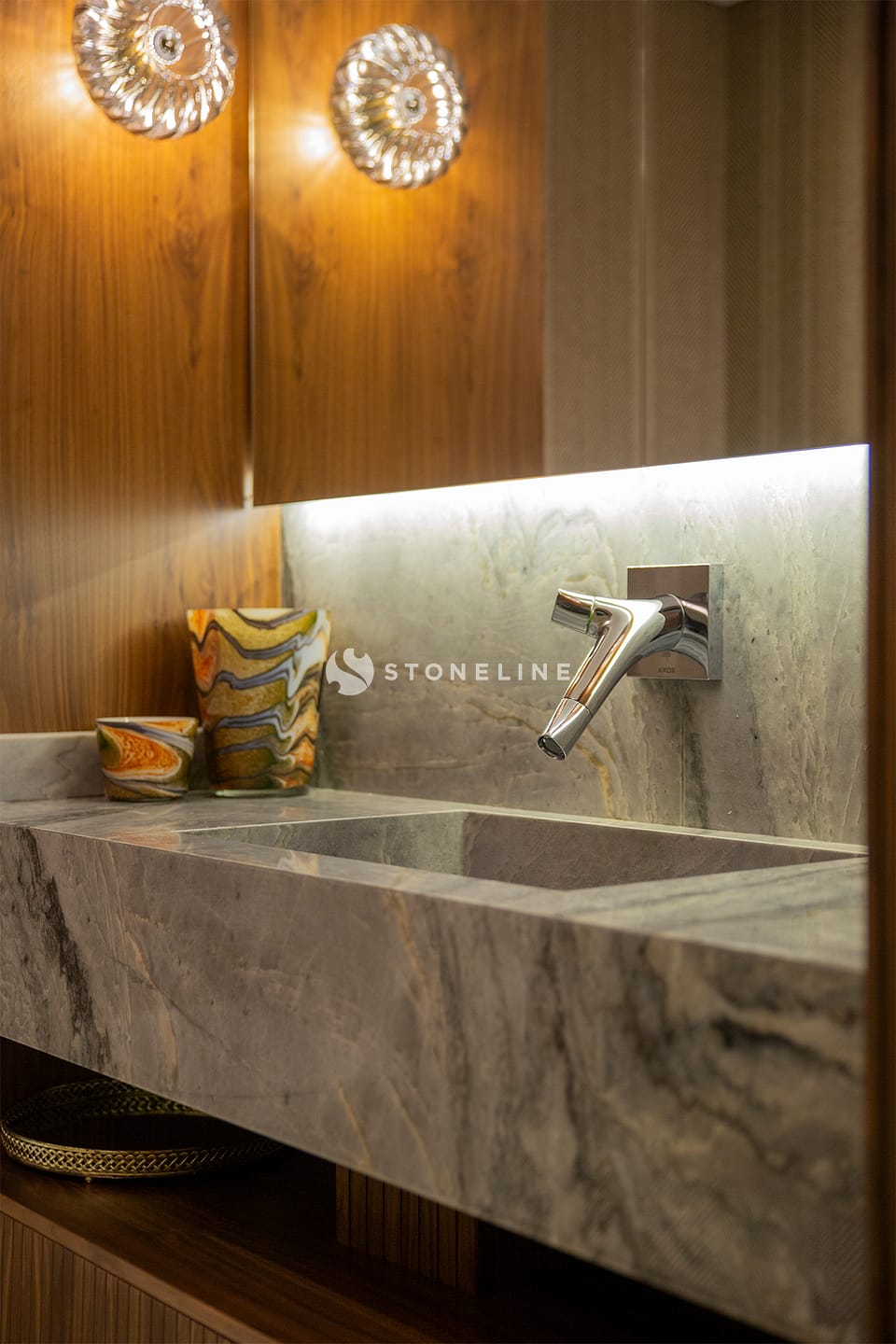
Conclusion
Designing an elegant space with quartzite is all about selecting the right lighting, surface finish, color, and layout. By following these steps and considering expert insights, you can create living environments that showcase the natural beauty of quartzite in truly captivating ways.
 Stoneline
Stoneline